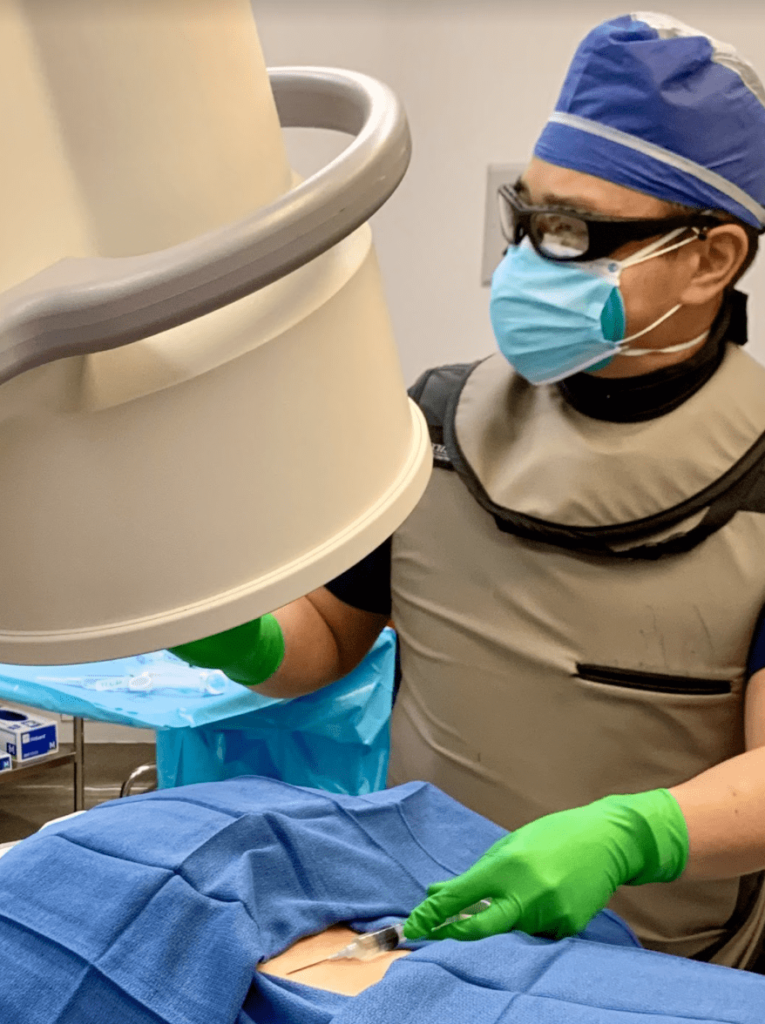Back Pain Q & A
What causes back pain?

You can pull a back muscle while twisting or lifting a heavy object or sustain an injury during athletic activities. However, back sprains and strains most often develop due to an overuse injury.
Overuse injuries occur when you repeat the same movement. The continual stress causes tiny tears in the soft tissues. If the tissues don’t have time to heal, the small tears enlarge and turn into a painful back injury.
As you get older, your spine becomes vulnerable to degenerative changes. Your back pain can be caused by:
- Herniated discs
- Osteoarthritis, including the facet joints
- Spinal stenosis
- Degenerative disc disease
- Slipped vertebrae
- Compression fracture
- Sacroiliac joint dysfunction
These conditions affect the structure of your spine and may pinch the spinal nerves.
What symptoms accompany back pain?
The injuries and conditions responsible for back pain typically cause additional symptoms such as difficulty moving and muscle spasms.
Pinched nerves cause pain, tingling, and burning sensations that radiate down your arms or legs, depending on whether the spine problem is in your neck or back. When you have a compressed sciatic nerve, you may experience the severe shooting leg pain of sciatica also known as radiculopathy.
A severely damaged nerve may also cause numbness and muscle weakness. For example, you may have a hard time lifting the front of your foot off the ground when walking.
How is back pain treated?

Dr. Pang evaluates your back and performs diagnostic imaging as needed to determine the cause of your pain. He begins your back pain treatment with conservative therapies such as avoiding activities that trigger your pain and prescribing anti-inflammatory medications and physical therapy.
If you still have pain, the next step in your treatment involves advanced minimally invasive procedures that ease your pain by targeting the nerves sending pain signals to your brain. A few examples include:
- Epidural steroid injections
- Facet joint injections
- Sacroiliac joint injection
- Medial branch block
- Radiofrequency ablation
- Spinal cord stimulation
- Vertebral augmentation (Kyphoplasty)
- Vertiflex™ Procedure
- MILD Procedure
- Platelet-rich plasma (PRP) injections
- Stem Cell Injections
- Botulinum Toxin Injections
PRP injections accelerate healing and regulate inflammation. If you have damaged discs or facet joint arthritis, Dr. Pang may recommend platelet-rich plasma (PRP) injections.
The other procedures in the list target the sources of back pain: pinched nerves, nerve inflammation, and nerves that send pain signals to your brain.
For example, radiofrequency ablation makes a precise wound on the nerve transmitting pain messages to your brain. As the wound blocks the signals, you don’t feel the pain.
Dr. Pang performs radiofrequency ablation on nerves in your neck, mid-back, lower back, and sacrum (the base of your spine). This minimally invasive procedure delivers pain relief that lasts at least nine months.
If you need relief from back pain, call Edward K. Pang Medical Corporation or book an appointment online today.

